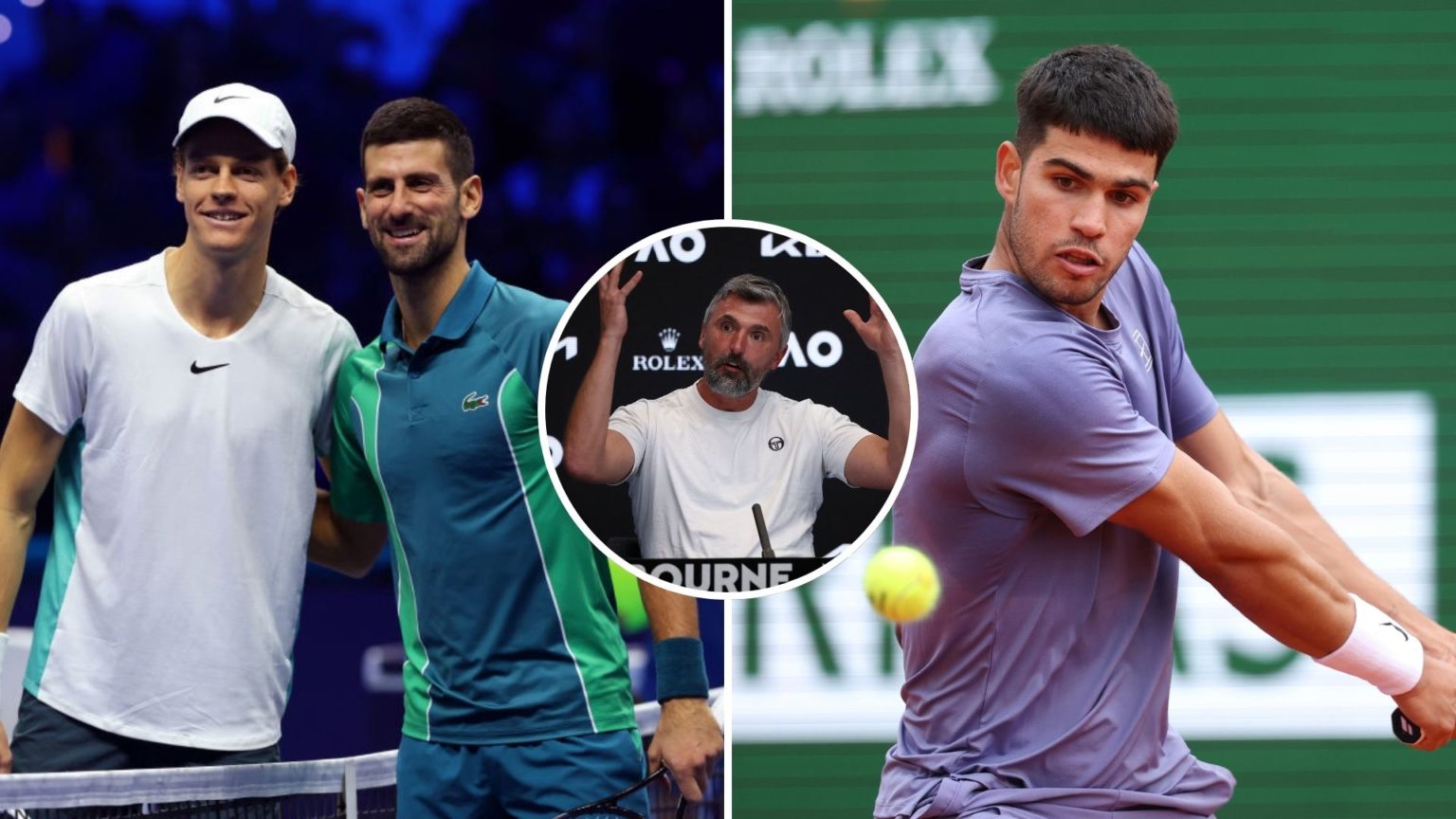In the dynamic world of men’s tennis, where precision and endurance often dictate supremacy, Carlos Alcaraz emerges as a captivating outlier, a player whose brilliance defies convention. Goran Ivanisevic, the former Wimbledon champion and seasoned coach who guided Novak Djokovic through years of dominance, recently offered a vivid take on what makes the 21-year-old Spaniard unique, especially when compared to world No. 1 Jannik Sinner and the ageless Djokovic. Alcaraz’s game, a thrilling blend of audacity and unpredictability, enthralls spectators and keeps opponents guessing, earning him accolades as tennis’s most electrifying talent.
Alcaraz plays with a flair that feels almost cinematic. Unlike the methodical consistency of Sinner and Djokovic, whom Ivanisevic compares to unyielding machines, Alcaraz weaves a tapestry of breathtaking highs and surprising stumbles. “It’s not easy, but you just get used to it,” Ivanisevic said, describing the mental discipline top players cultivate to stay focused. He explained that elite competitors are always on guard, knowing that “once they smell blood, you’re done.” For Djokovic and Sinner, this manifests as a relentless pursuit of control. “Sinner is like that. Novak is like that,” Ivanisevic noted, highlighting their ability to wear down rivals with surgical precision. Sinner, in particular, is a “shark” who “doesn’t let go” once he seizes an advantage. Alcaraz, however, dances to a different rhythm. “Alcaraz plays one set, and you may not win a single point. But then he gives you the next,” Ivanisevic observed, encapsulating the Spaniard’s rollercoaster style that oscillates between invincible and vulnerable.
This unpredictability was vividly showcased in Alcaraz’s recent clash with Francisco Cerundolo at the Monte Carlo Masters in April 2025. The Spaniard faltered in the opening set, his shots spraying wide as Cerundolo capitalized. Yet, in a flash, Alcaraz transformed, unleashing a barrage of winners to concede just one more game across the next two sets, securing a commanding victory. The match mirrored his 2025 season, where only half of his wins have come in straight sets—a striking contrast to Sinner’s 71% straight-sets victories, though Sinner’s season was curtailed by off-court challenges. Djokovic, too, shares Alcaraz’s 50% straight-sets win rate this year, but his calculated approach feels distant from Alcaraz’s high-stakes artistry. Ivanisevic admitted he’s drawn to Alcaraz’s matches precisely for this volatility, a stark departure from the “ruthless” consistency of Sinner and Djokovic.
What drives Alcaraz’s distinctive style? It’s his fearless creativity. His forehand cracks winners that seem to bend the laws of physics, while his drop shots, delivered with a conjurer’s touch, leave rivals stranded. But this boldness comes at a cost—unforced errors that steadier players like Sinner sidestep. Sinner’s groundstrokes, razor-sharp and consistent, and Djokovic’s peerless court coverage create a suffocating dynamic, while Alcaraz opts for flair over formula. It’s a gamble that has paid off spectacularly, with four Grand Slam titles, including his first Monte Carlo triumph in 2025, but also leads to moments where he briefly loses his spark. Against Cerundolo, those early miscues gave way to a torrent of brilliance, underscoring a resilience that matches his showmanship.
Ivanisevic’s analysis peels back layers of Alcaraz’s mindset. Unlike Sinner’s laser-focused intensity or Djokovic’s seasoned pragmatism, Alcaraz approaches the court with a youthful exuberance, as if every point is an invitation to create. “Everyone has their own way,” Ivanisevic said, nodding to the rituals that anchor players, and for Alcaraz, that way is instinct-driven, a fusion of joy and improvisation. This makes him prone to dips but also capable of seismic shifts, turning matches with a single, audacious stroke. His Monte Carlo run, culminating in a title, proved he can harness this chaos into championship form, even on clay’s demanding canvas.
Off the court, the contrasts deepen. Sinner’s ascent carries a quiet ferocity, his 2025 season shadowed but not dimmed by external controversies. Djokovic, at 37, remains the sport’s gold standard, his drive as fierce as ever. Alcaraz, though, is tennis’s charismatic entertainer, his infectious smile as potent as his crosscourt backhand. Fans flock to his matches, and Ivanisevic confessed a preference for watching him, even as he acknowledged Sinner’s edge in their rivalry—Alcaraz leads 6-4 overall but swept their 2024 encounters 3-0. The numbers tell only part of the story; it’s Alcaraz’s unpredictability that makes every clash a must-watch.
As tennis anticipates the next chapter in this generational saga, Alcaraz’s wild brilliance sets him apart. Will he temper his volatility to rival Sinner’s consistency, or will he keep painting the court with bold, erratic strokes? Ivanisevic’s words suggest the latter, and that’s precisely what makes Alcaraz a phenomenon. In a sport that prizes control, he’s a whirlwind—dazzling, untamed, and utterly unforgettable.

